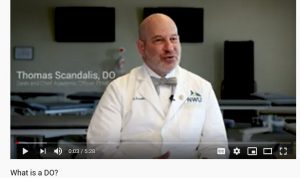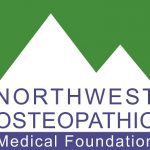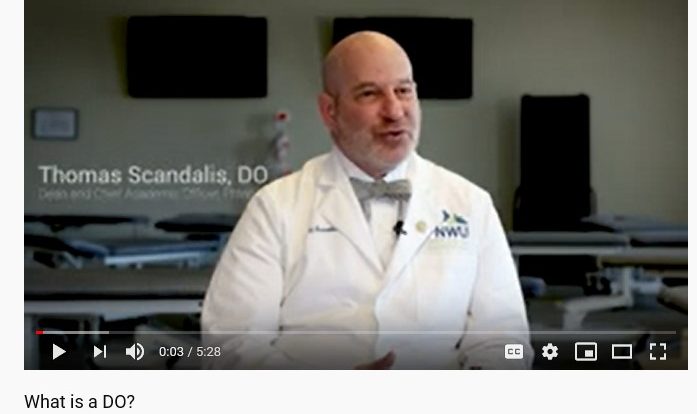By Linda Tate, Northwest Osteopathic Medical Foundation Communications Director
We are going to talk about Osteopathic Medicine, and the Mind-Body-Spirit approach. I’ve had many people ask me about DO’s (Doctors that practice Osteopathic Medicine), so I decided to give you all the run down.
Medical Doctors and Osteopathic Doctors both attend medical school. A D.O. is an osteopathic physician, while an M.D. is a medical doctor, an allopathic physician. The education for both D.O. and M.D. degrees is similar, and both are required to complete accredited medical residencies.
Osteopathic medical schools also require additional classes – between 300 and 500 hours – on the skeletal system and the interactions of the body with diseases. Both DOs and MDs are licensed in all 50 states to practice medicine and surgery, as well as to prescribe medications.
The biggest difference between an MD and a DO is their philosophy and training. At every level of training, beginning at medical school, a DO is trained to look at the whole person, mind-body-spirit. Disease is often secondary to the body’s alignment being “off” and with the aid of some gentle manipulation, the body is realigned and can then heal itself.
I can give you a personal example of a time that a DO helped me when nobody else could. I had presented at urgent care with a raging headache. I’d had it for several weeks, and it was only getting worse. The urgent care MD ordered a CT head scan. An IV was started and I was transferred to the ER. “We think you have a blood clot in your brain“, I was told.
After the scan, my IV was taken out and I was told that I was fine and could go home. The only problem was that I still had a raging headache. Several PCP visits, and an MRI later, I was told it was “stress“. In other words, stop talking to us about this, we can’t fix it.
My husband arranged for me to see a DO who came highly recommended. We had to pay out of pocket, and I was skeptical. If all those heavy duty tests hadn’t found the problem, then what could this man do?
My first impression of Dr. Al Turner (DO) was that his hands were huge. Like massive. He had kind eyes and a slow, reassuring bedside manner. He took a very complete background on me, and acted like he had all day to visit. There would be no “hurry we only have 15 minutes” with this doctor.
As he asked me where my head hurt, he noted to my husband that I said my head hurt, but I instinctively had reached up and rubbed my neck as I said “head“. He felt around on my neck, and then said he was going to apply some pressure, and to let him know when the pain was gone. I remember thinking to myself, “OOOOkaayyyyy…whatever, dude…“.
Thirty seconds into him holding pressure, I thought I felt things lift. One minute into him holding pressure and I had to admit the pain was leaving me. Ninety seconds into treatment and the pain was gone. It never came back.
I guess I could talk to you forever about classes DOs take, and why DOs are “just as good” as an MD, but personal stories are what Osteopathic Doctors are all about. They will ask you about your home, your marriage, your ex, your children, and they will actually wait to hear the answers. If you are having trouble at work, they want to know about that. If you can’t afford fresh fruit and vegetables, they want to know about that. DOs will problem solve with you. Your health, your wellness, is important to a DO.
They are not looking for disease. They are looking for wellness. There is a program called, “Walk with a Doc” where DOs meet their patients at the local parks, gyms, malls, or tracks, to walk. They give a five minute talk on wellness, and then they walk with you, your kids, your friends…everyone is happy and laughing and chatting away. It’s a beautiful thing.
The DO wrote an article on the Mind-Body connection, and had this to say,
“Psychiatrist Ronald Paolini, DO, is a frequent witness to the powerful connection between the mind and the body. Dr. Paolini works at Fort Gordon, an Army base in Georgia, where he primarily treats soldiers who’ve had concussions, many of whom have interrelated behavioral and physical health issues.
“To gain more insight into patients’ overall health, Dr. Paolini makes a habit of walking patients from the waiting room to his office to observe their demeanor in a more casual setting. ‘If I’m treating a patient for PTSD and he also has pain, I have to look at the whole picture,’ Dr. Paolini says. ‘Whether it’s pain or marital or financial problems, you have to understand what the patient is living with before you can address their behavioral health effectively’.”

Whether it be physical health, or mental health, wellness doesn’t just start with the issue at hand. Any illness or disease a person can present with, starts with a laundry list of events or situations that predated the illness. Once the root of the problem is found, and adjustments are made, wellness comes naturally. Our bodies want to be well, and DOs just facilitate addressing the needs so that the body can then take over and finish the job.

About Linda Tate
Linda Tate is the Communications Director for the Foundation. She has more than 20 years of experience in the field of social services, having worked with juvenile offenders, victims of domestic violence, homeless veterans and families, foster children, adult offenders, and the developmentally disabled. Linda served on the mobile crisis team, Project Respond, and most recently worked at the Halsey Street Crisis Resolution Center. Aside from her career in social work, she was the Donor Relations Manager for a non-profit in NYC (the SPCAI), an executive secretary for the Engineering Manager at Precision CastParts, and was honored to be the Executive Director of Camp Opportunity, a non-profit serving underserved youth in the Washington area.

The Northwest Osteopathic Medical Foundation is a public charity committed to Advancing Wellness through the Osteopathic Approach. As a charity, we do not represent any medical school, medical association, medical practice, or individual physician.
This blog should not be considered to be medical advice. Your personal health is best discussed one-on-one with your personal physician. Rather, this blog is intended to highlight the distinctive philosophy and practice of osteopathic medicine as expressed by the author and does not necessarily represent the opinion of the Northwest Osteopathic Medical Foundation, or other Osteopathic physicians. The information and opinions are solely those of the author. For more information, go to https://www.nwosteo.org


